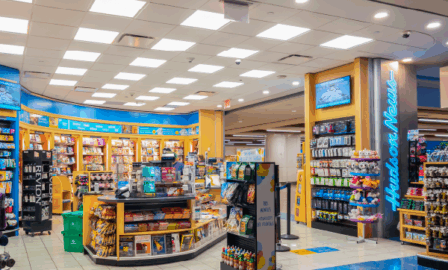Retailer Performance in 2022
As the market continues to return to normal from the drastic effects of COVID-19, there are still lingering problems that are affecting numerous retail companies. Issues such as labor shortages, supply chain issues, and rising inflation have led to companies to react very differently – while some retail companies are thriving, others have failed to adapt to the changing landscape. In this piece, we explore 2022 retailer performance trends. Below, view examples of companies that have either thrived or struggled in 2022, and what each company has done – or continues to do – to bring that success or failure.
2022 Retailer Performance Trends
Trend 1: Inflation & Shifting Shopper Preferences
As inflation continues to berate the economic landscape of America, shoppers are starting to shift their wants to necessities. Over the last 12 months, the Consumer Price Index for consumers increased 9.1 percent, the largest 12-month increase since 1981. Rising prices mean shoppers can’t afford as many luxury items or products that aren’t essential to their daily lives. As a result, much more emphasis is being placed on lower-priced products and essentials such as food and gas. Middle-market retailers are consequently suffering as shoppers turn away from their higher-priced product lines.
Costco (Thriving)
Costco has been thriving past inflation and shifting consumer preferences because it uses a model that prioritizes lower prices through selling in bulk. Many of Costco’s product assortments come in large packages with slashed prices, which allows consumers to stock up on affordable products. Costco also reinvests the money it doesn’t spend on marketing and uses it to cut prices and boost wages, eliminating labor shortages and problems from inflation. With this current model, they can withstand the headwinds of current economic conditions.
Because of their successful model, Costco claims 116.6 million cardholders, and its members are famous for their fierce loyalty to the brand. According to Fortune, Costco enjoyed a 91% membership renewal rate in 2021. They are also currently number five on Fortune’s top international retailers.
Wayfair (Struggling)
Wayfair is a notable example of a struggling company due to inflation and shoppers changing their buying habits. During the pandemic, many shoppers used their savings to furnish their homes and purchased home goods in excess. These goods aren’t normally seen as necessities, which has become more emphasized recently. Mass inflation has shifted shopper preferences from wants to need, and factors such as higher gasoline prices and food prices have led to many people to prioritize their spending mony on necessities rather than nonessential purchases. Wayfair’s current model, which sells sofas, bedding, and kitchen decorations, has struggled mightily, and despite aggressive investment into promotion, sales and stocks keep declining.
As a result of these changes, Wayfair revenue in the first six months of 2022 was down 14%, and it just reported a $697 million net loss compared to a $149 million profit in the same period of 2021.
Peloton (Struggling)
Peloton’s struggles stem from the fading popularity of at-home fitness as individuals have transitioned back to in-person activity post-COVID as well as mishandled coordination operations. The need for at-home fitness equipment has declined immensely, hurting companies like Peloton. Further, rising inflation coupled with shoppers who have less cash to spend make it hard for most to purchase Peloton’s products, which cost thousands of dollars and are unreasonable for those looking to prioritize their spending on essentials only. Even with minor changes to their prices, Peloton has not adapted to inflation well. This is a classic example of overinvesting due to a short-term change in shopper preference.
Peak pandemic, Peloton was booming. Its stock pushed $171 per share and its market cap lingered around $50 billion. However, in recent years, the company has laid off more than 4,000 workers and is considering selling it to larger retailers, such as Nike. While more innovative solutions may lie in the future, Peloton is at a shaky crossroads between being acquired or having to push through tough conditions.
Trend 2: Supply Chain Disruptions
A lack of working demand and logistical issues have led to supply chain disruptions throughout many industries. Over concerns about lack of inventory, we have seen shoppers panic buying goods to stockpile and prepare for future shortages. This has led to wholesalers and retailers who sell in bulk thriving, as well as those who sell bundled items for low prices (Walmart, Costco, Sam’s, etc.). Inevitably, companies that cater to upper and middle markets are struggling to get sales and are left with inventory that goes untouched. Companies that have an efficient inventory system based on cheaper items are capitalizing on this.
Walmart (Thriving)
Walmart has fought past supply chain issues because they can utilize their low pricing model to withstand fluctuations in supply and demand. Walmart has consistently used its everyday low pricing (EDLP) to keep prices low for shoppers compared to other major retailers. They also have a large labor supply, due to mass capital and the ability to pay their workers better wages. In addition, Walmart sells many products that are seen as necessities, such as groceries, medicine, and hygienic products. By selling these necessities at a low price point, they have been able to stride past other higher-priced competitors. President and CEO Doug McMillon credited Walmart’s Q2 success to its ability to “improve inventory levels in the U.S., along with a heavier mix of sales in grocery.”
Because of its balanced inventory and product mix, sales at Walmart U.S. increased 7.1% to $105.13 billion in the second quarter from $98.19 billion just a year ago. Low- and middle-income households, plagued by higher prices, continue to pick Walmart for groceries and retail needs.
Macy’s (Struggling)
Macy’s has typically focused more on their physical locations, but with the era of online shopping growing and COVID-19 restrictions playing a role, they were forced to shift its model. Macy’s “Polaris” strategy, which allowed shoppers to interact with the brand and had digital elements to it across all channels, was halted heavily due to COVID restrictions. Further, Macy’s still uses many old legacy technologies that have become outdated as technology continues to be innovated, resulting in their struggles to keep up.
Macy’s has also previously tried using stores as fulfillment centers and reducing office space. As a result, they have been left with excess inventory that they can’t move and robust competition from other online juggernauts such as Amazon. In addition to crippling inflation that has plagued Americans, Macy’s middle-income demographic has struggled to afford many of their prices because they don’t have a feasible selling point.
Because of these failures, Macy’s comparable sales have dropped 1.5%, and earnings per share dropped around 9 cents. This trend will continue if Macy’s doesn’t make a strategic effort to prioritize mixed channels.
Trend 3: The Rise of Private Label
As a result of inflation and supply chain issues, private label companies have benefited from being able to set their own prices and inventory levels. Private label companies can have more flexibility in where they want to locate their company (low-income communities during this time of distress) and can manage their staff size much more comfortably than companies that must rely on multiple channels of distribution.
Dollar Tree (Thriving)
Dollar Tree is an example of a company that has stood the test of time with their low prices and promise to keep everything in their store at a cheap buck. As a result, they have thrived during the recent period of high inflation. Dollar Tree makes its money by selling inventory in smaller sizes, selling private label products, locating themselves near low-income communities, and having a small staff size. Most of their inventory is also private labels, so they have a lot of flexibility with their inventory management and prices.
Dollar Tree’s sales rose 4.9% in the second quarter, marking success even throughout the currently volatile economy.
Bed Bath & Beyond (BB&B) (Struggling)
BB&B has struggled due to their use of private labels with higher price points. In 2021, BB&B launched many private label brands like Nestwell, Simply Essential, and Wild Sage, but these have proven to be extremely underwhelming. BB&B has since discontinued its Wild Sage product line, which was an expensive private brand of bedding, decor, and furniture that they released in 2021. BB&B can set their own prices and inventory levels but has struggled to attract a large enough demographic due to higher inflation and less disposable income for consumers. A complete board overhaul at the top of BB&B was implemented to address this change and to drive innovation after years of ongoing, decaying consumer interest. New management also decided to remove thousands of underperforming SKUs from the store, and as a result, many described the store as “bland” or “ordinary.
In its most recent quarter, the retailer reported net sales fell 25% year over year, while comparable sales fell 23%. BB&B also reported an operating loss over 265 million dollars and net loss of over $300 million dollars. If BB&B can’t get its price point down, these struggles could continue.
Moving Forward
As companies continue to adjust to rising inflation, supply chain issues, and evolving shopper habits and preferences, it’s clear that some are thriving while others are in trouble. To find success in this market, retailers will need to adjust their model to include lower prices and product selections that target shoppers’ current necessities. The outlook on inflation is gloomy, and problems in the supply chain, rising prices, and labor shortages need to be predicted for the coming quarters.
To better understand these 2022 retailer performance trends and the impact they may have on your businesses, reach out to Clarkston’s retail experts.
Subscribe to Clarkston's Insights
Contributions by Vishnu Avva



